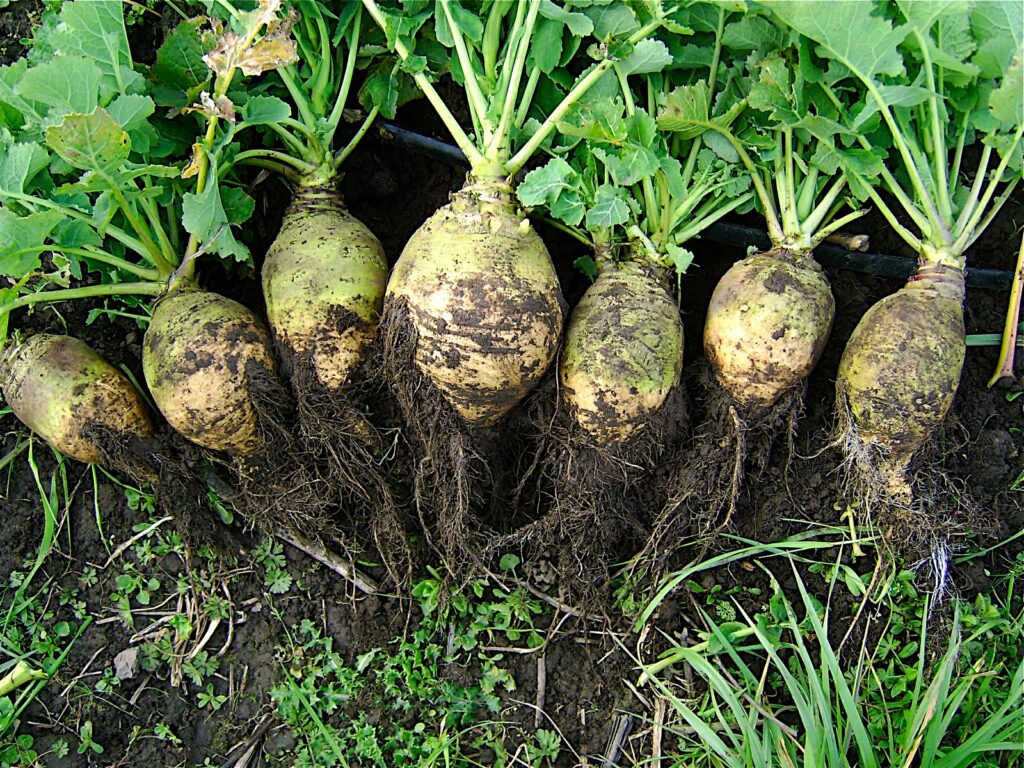Rutabagas are a root vegetable in the mustard family and are a cross between turnips and cabbage. Since they grow well in cool weather and can be harvested into winter, they tend to be popular in northern countries. Another name for them is Swedish turnips or swedes.
Rutabagas are large oval or slightly elongated bulbs with firm yellow flesh. The leaves of rutabaga plants, which are edible, are similar to turnip leaves but are thicker, like cabbage or kale leaves. Rutabagas often do not flower, but when they do, it is a small, yellow Brassica flower, with four petals that form a cross and give them their designation as cruciferous vegetables. They are typically planted in spring, but they can be planted in fall in warm climates.
Rutabaga Varieties Altasweet: Mild, less peppery flavor; matures in 90 to 100 days
American Purple Top: Popularly grown variety with large bulbs; matures in 90 to 100 days
Laurentian: Heirloom variety with uniform, sweet bulbs; matures in 90 to 120 days
Pike: Similar to ‛Laurentian’ but a little hardier; matures in 100 to 120 days






